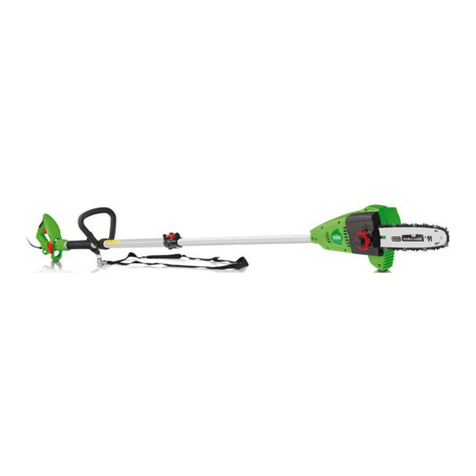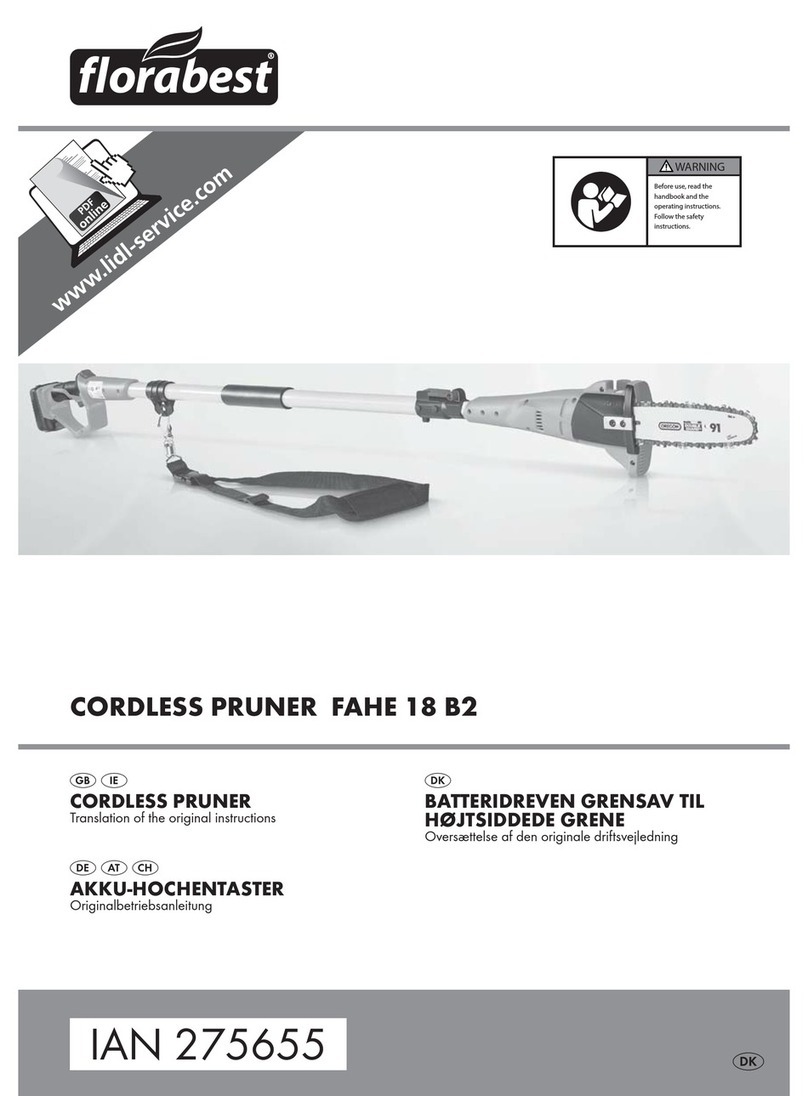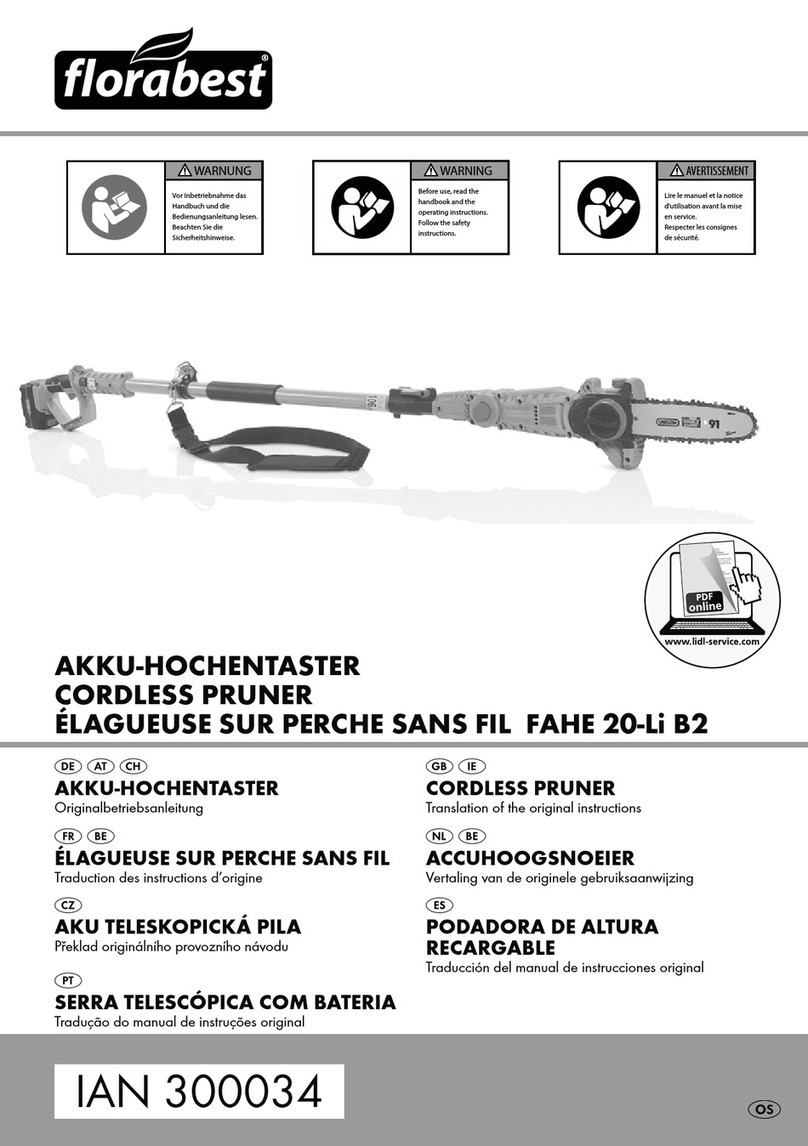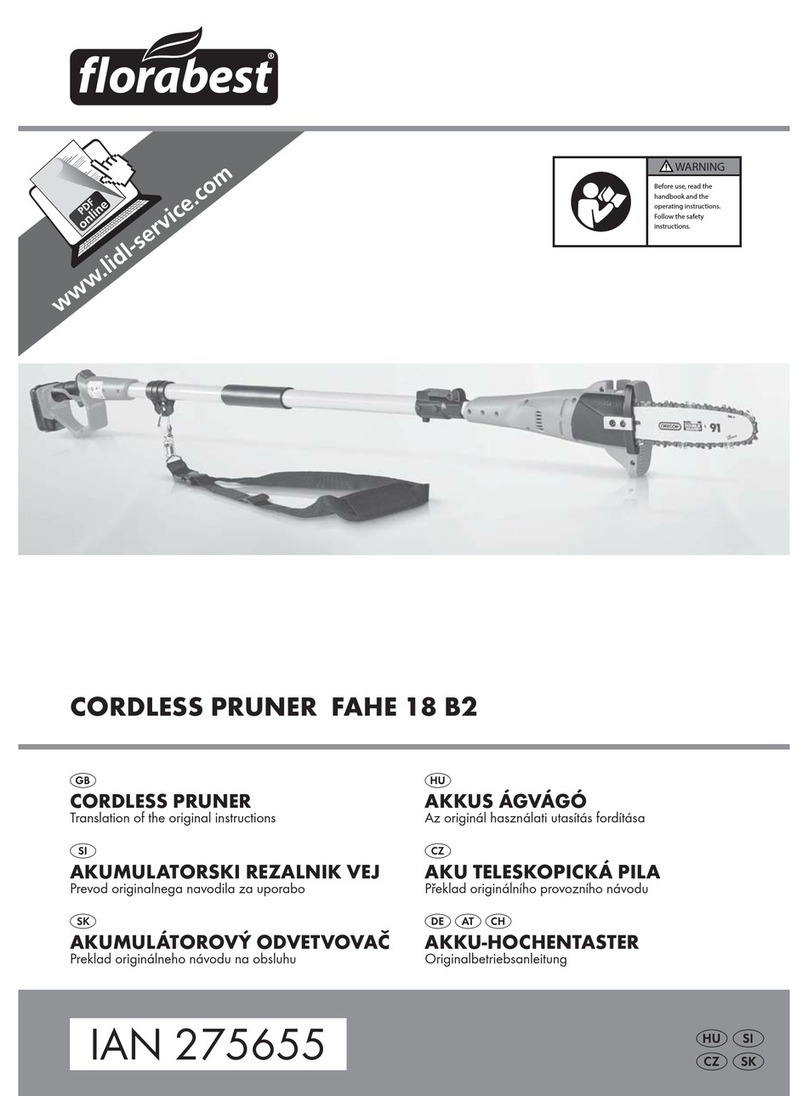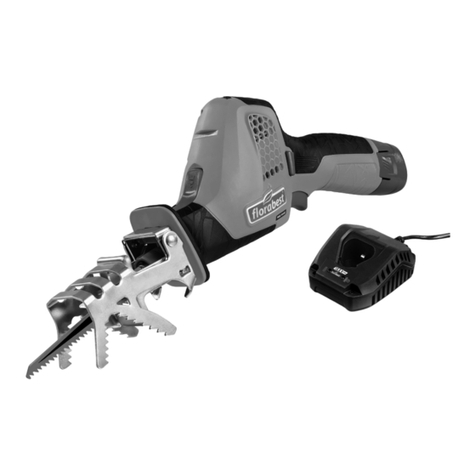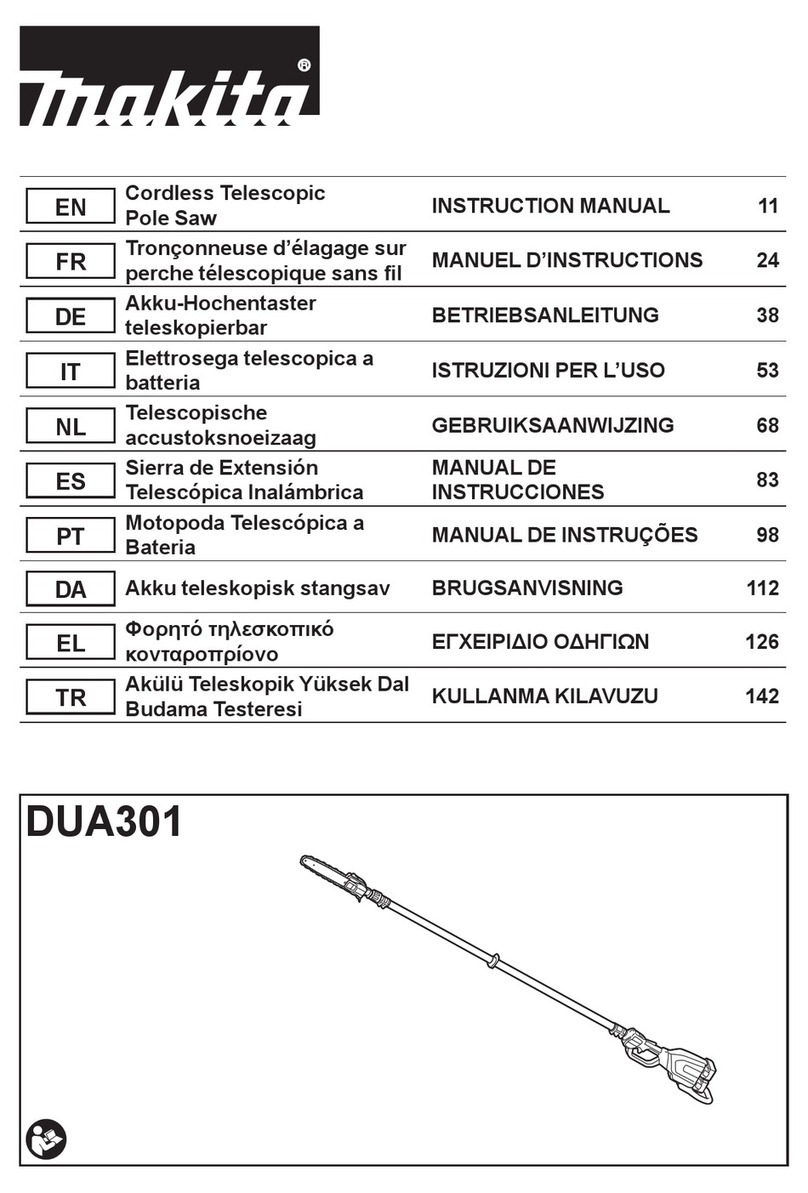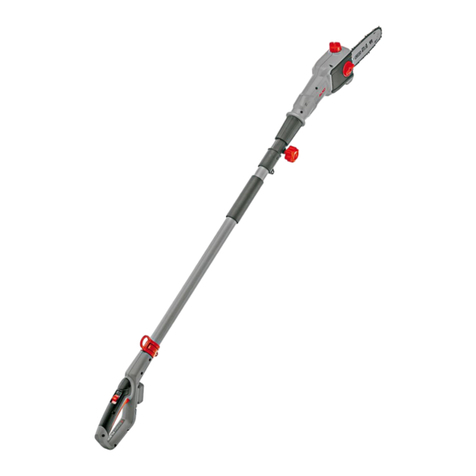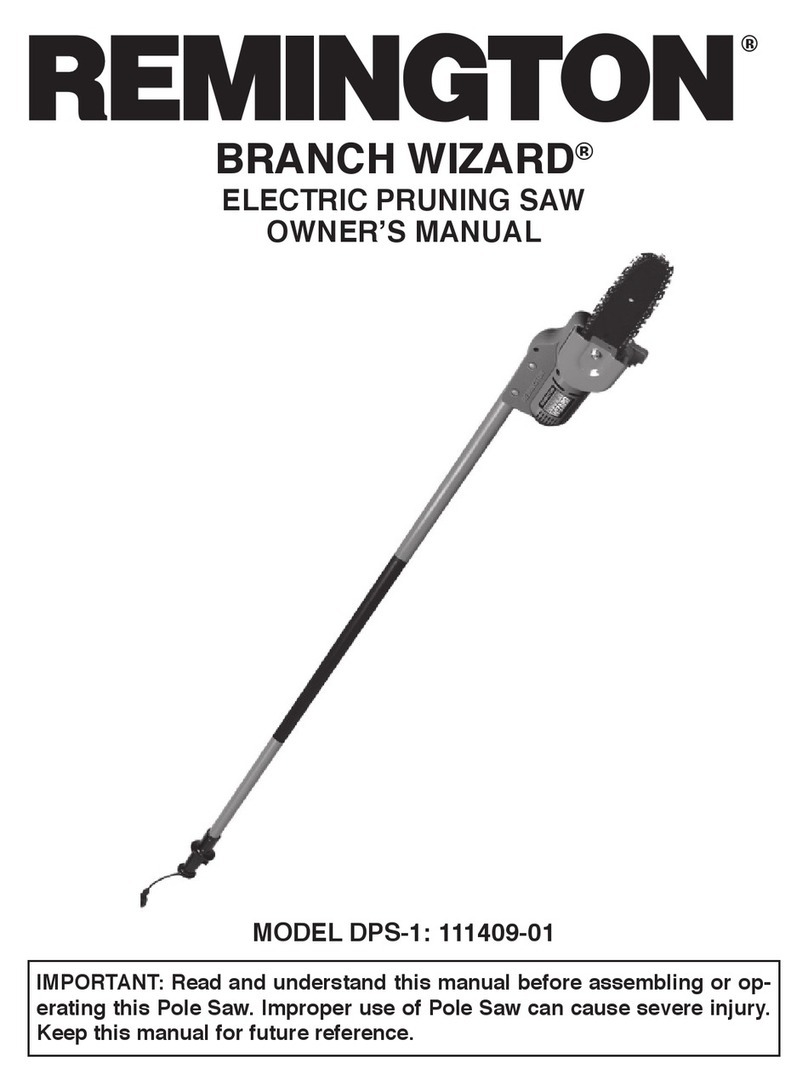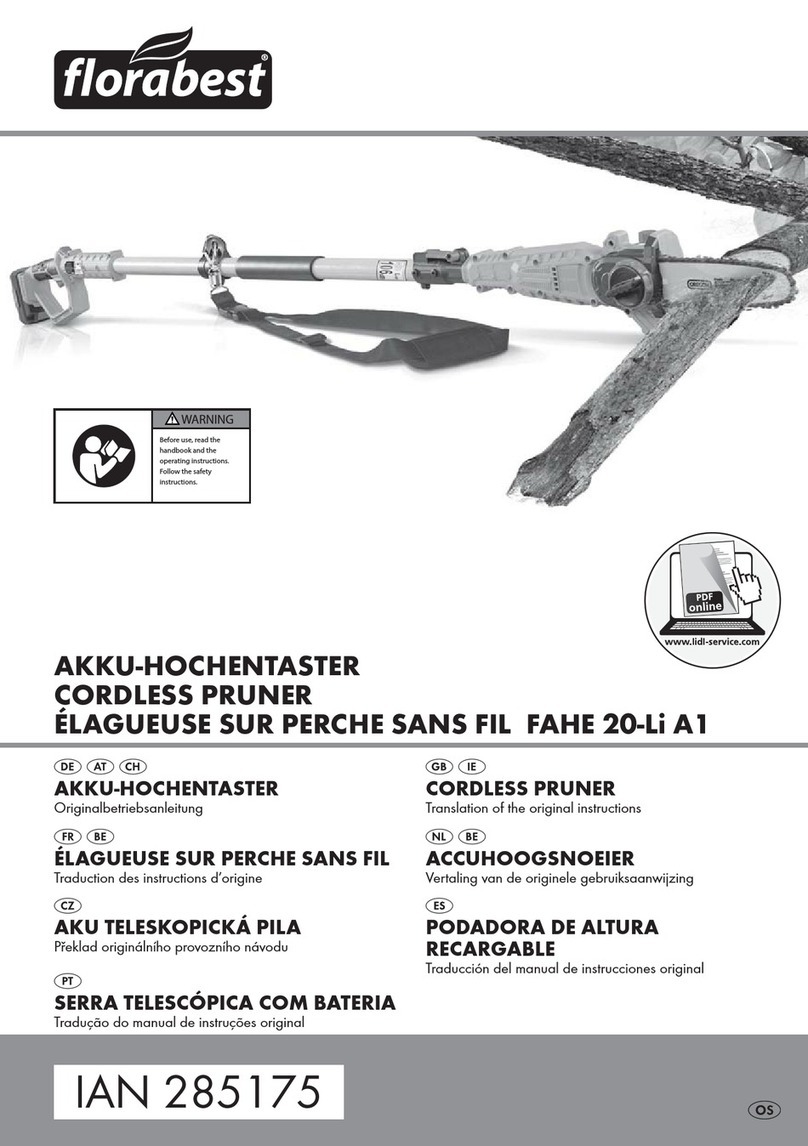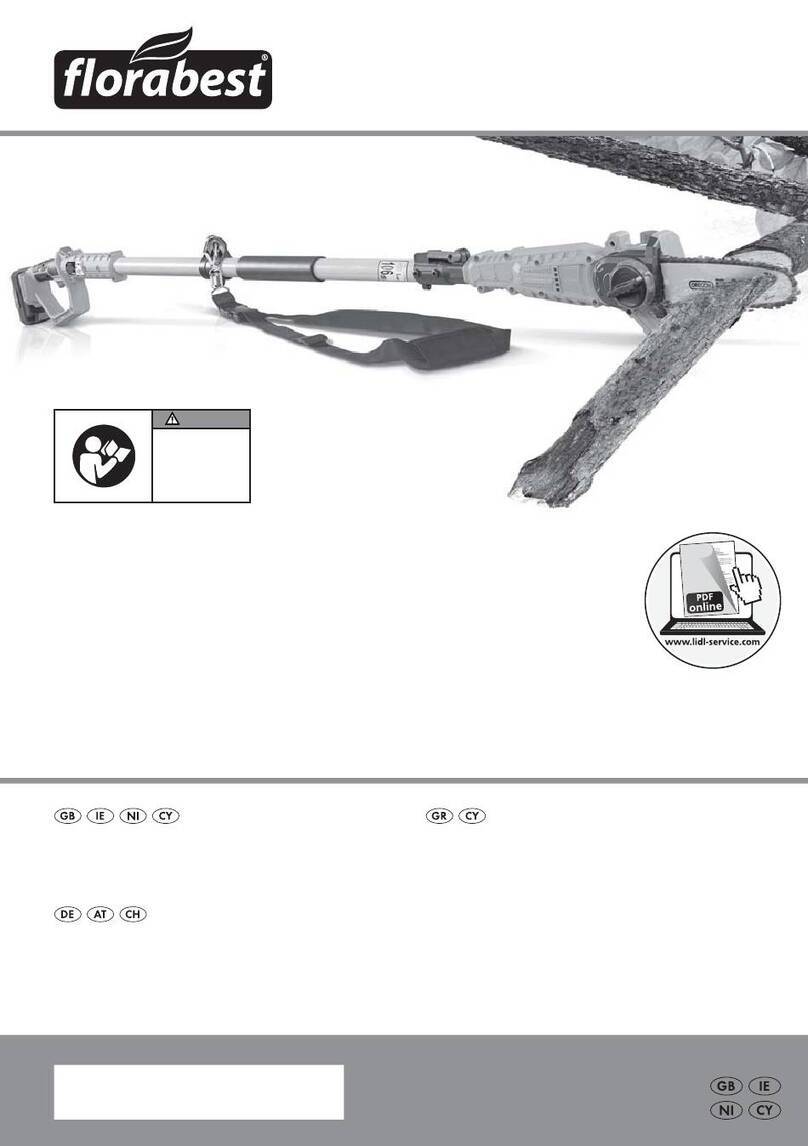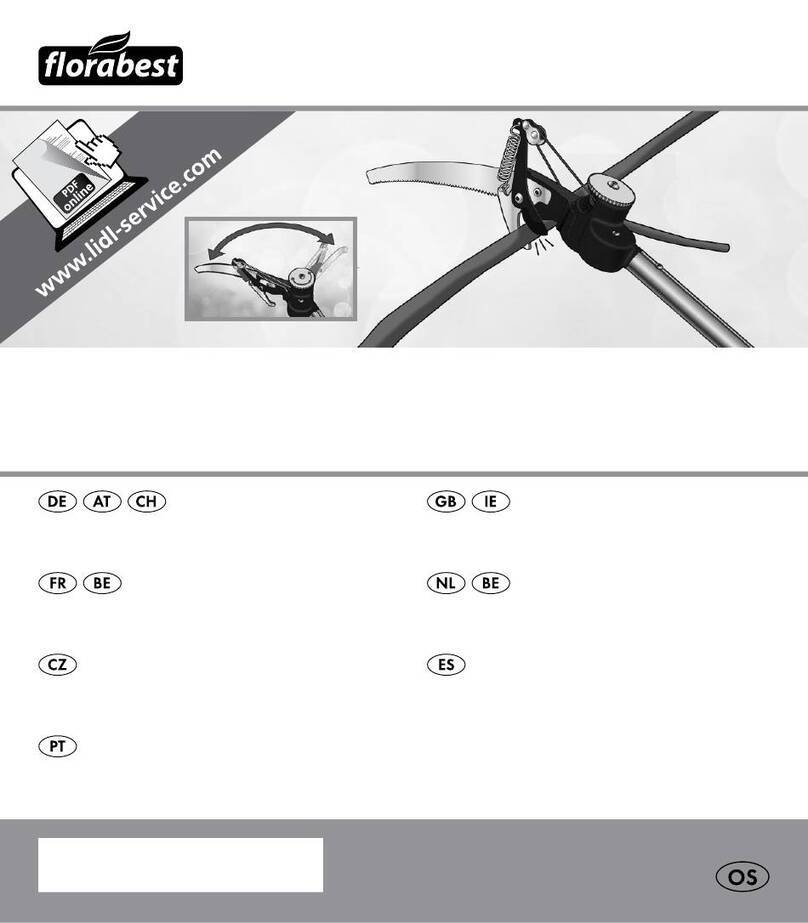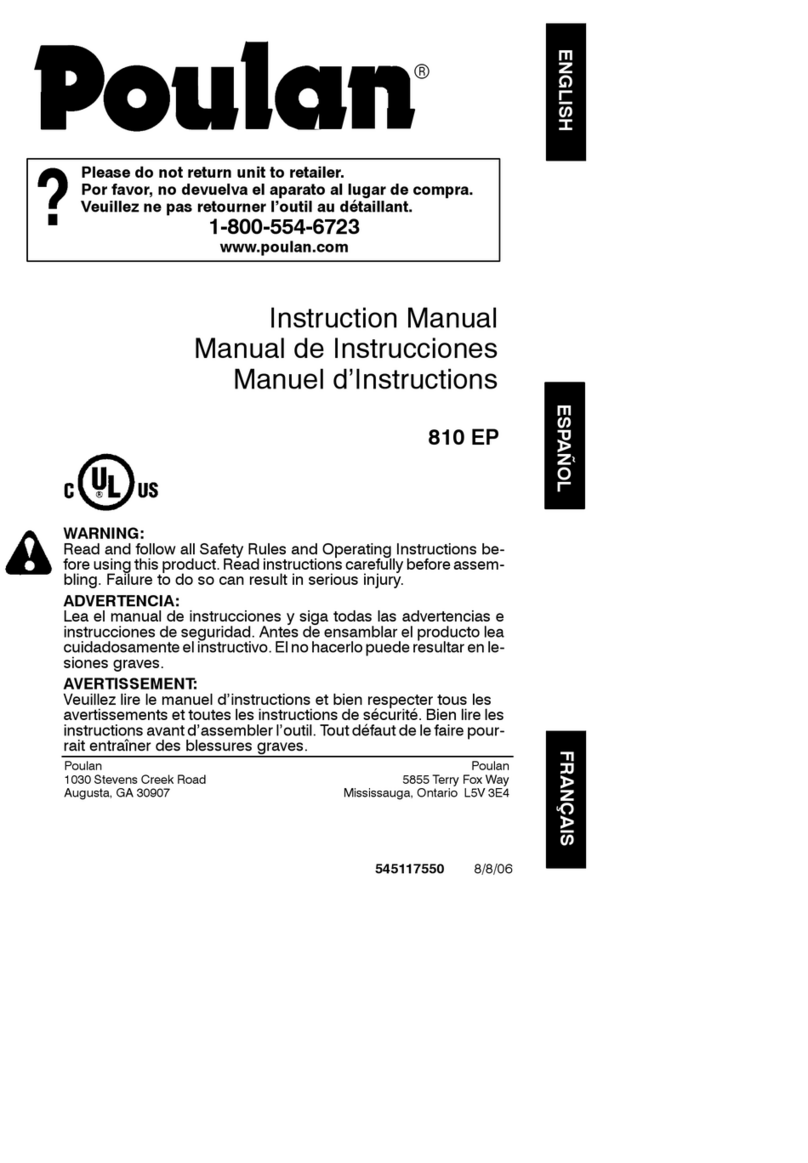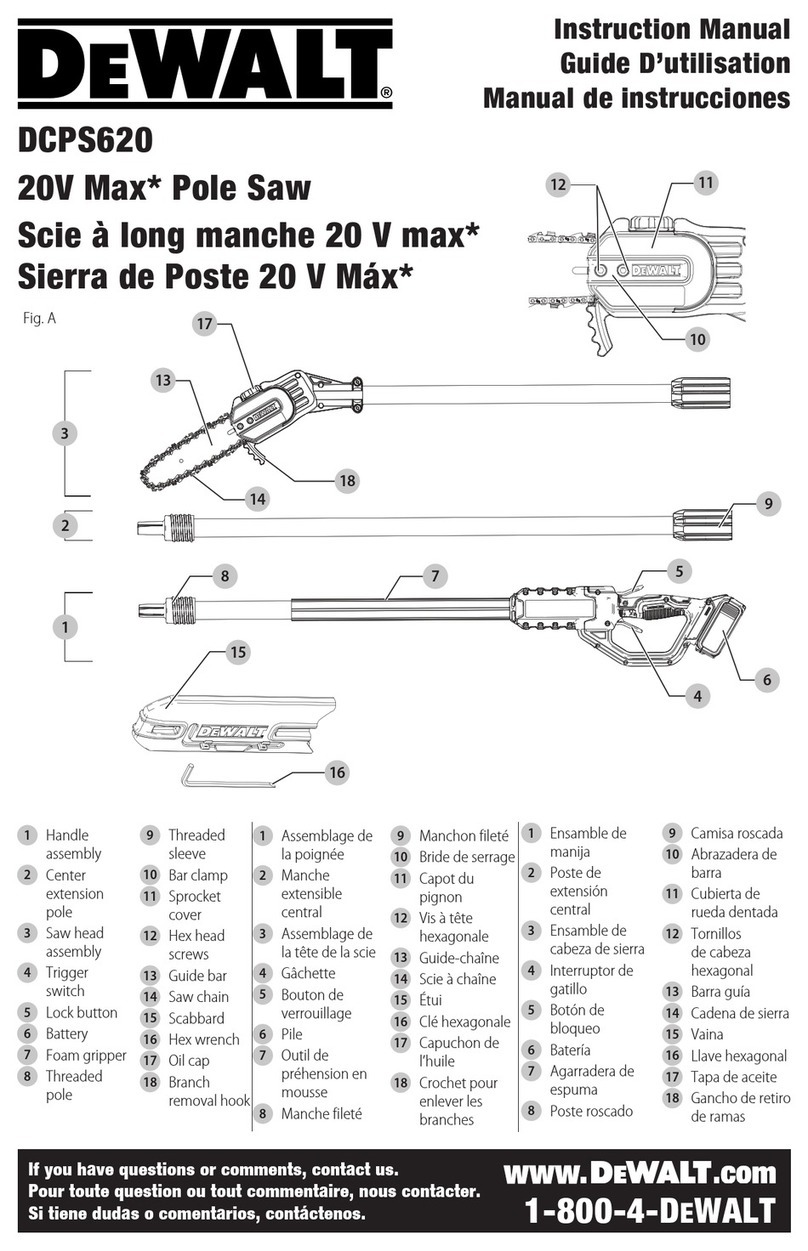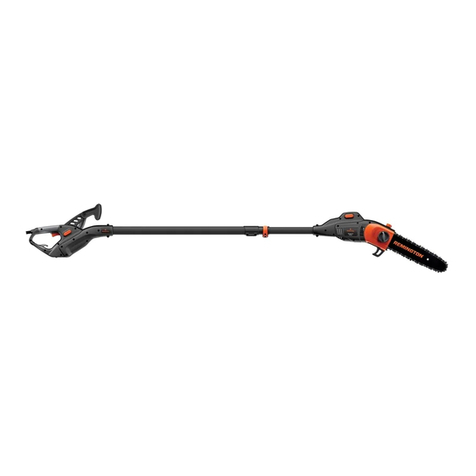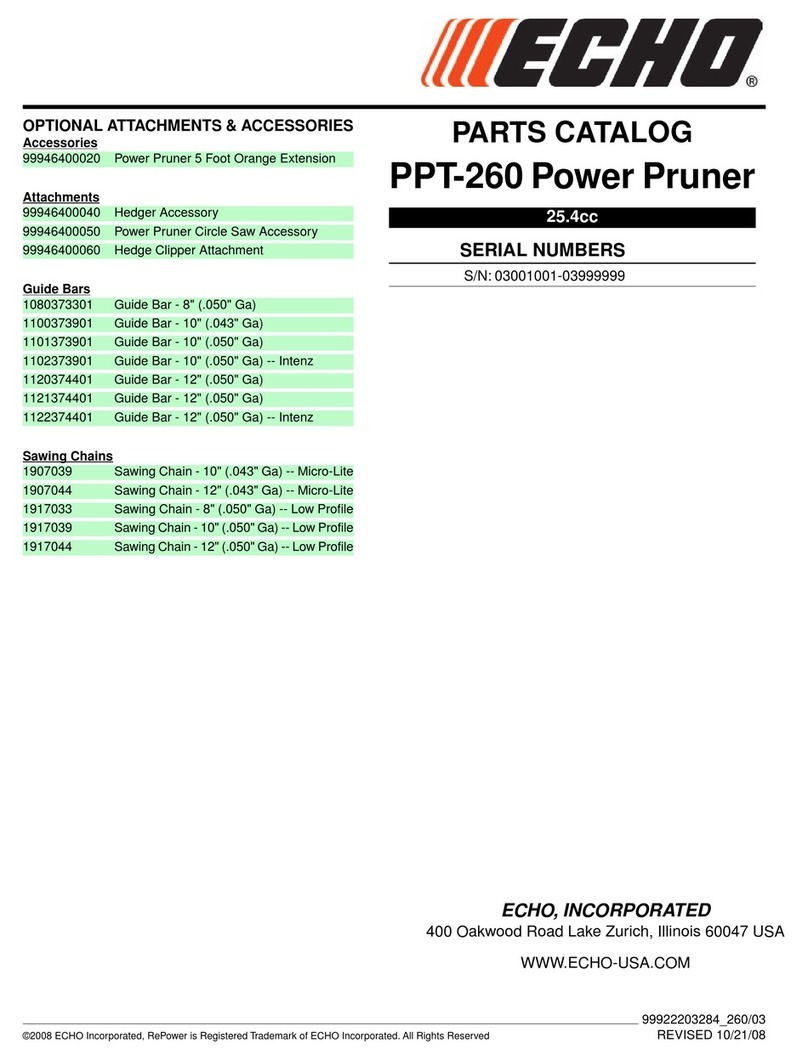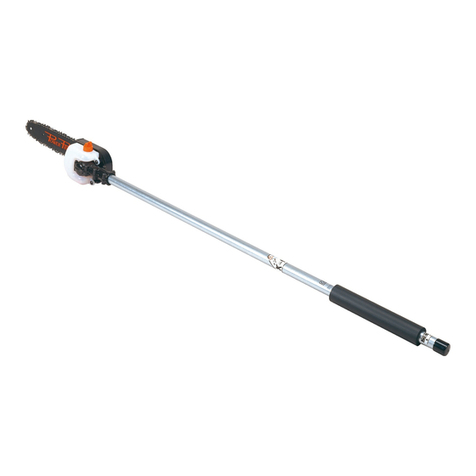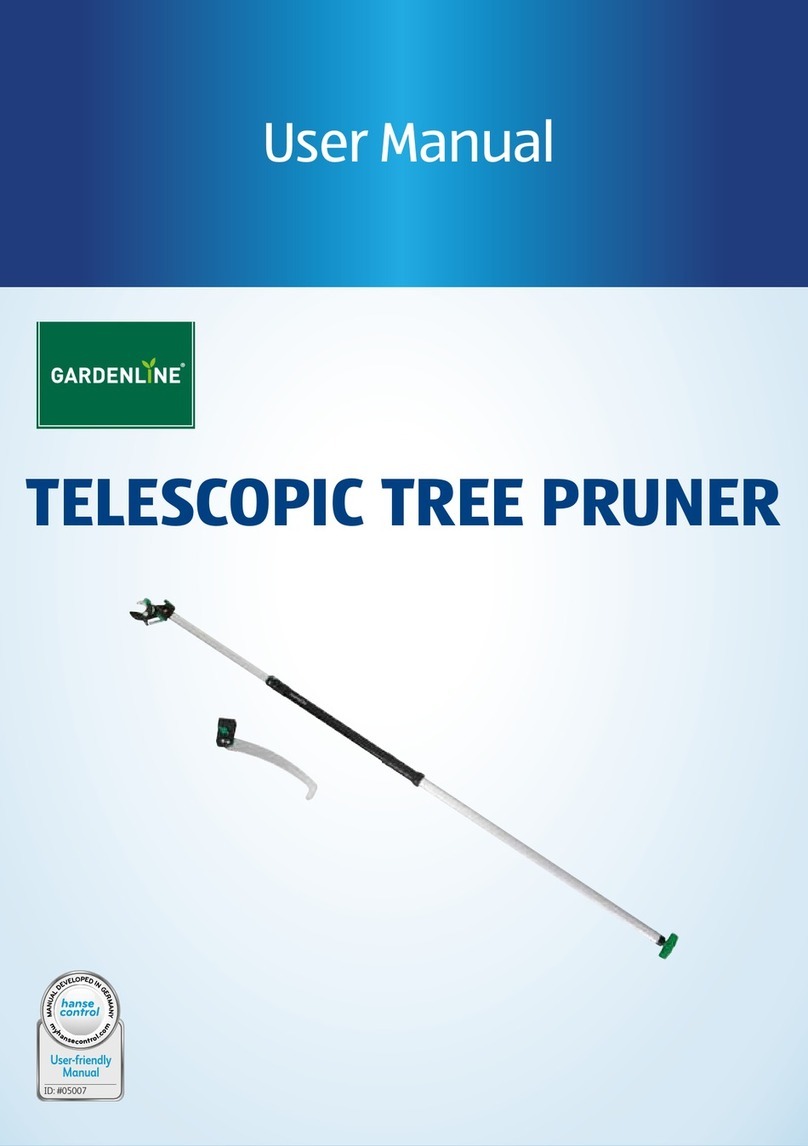
5. Always hold the product with both
hands on the handles. Holding the
product with only one hand or on parts not
intended for that increases the risk of personal
injury and should never be done.
6. Wear safety glasses and hearing
protection. Further protective
equipment for head, hands, legs
and feet is recommended. Adequate
protective clothing will reduce personal injury
by flying debris or accidental contact with the
saw chain.
7. Do not operate a product in a tree.
Operation of a product while up in a tree
may result in personal injury.
8. Always keep proper footing and
operate the product only when
standing on fixed, secure and level
surface. Slippery or unstable surfaces such
as ladders may cause a loss of balance or
control of the product.
9. When cutting a limb that is under
tension be alert for spring back.
When the tension in the wood fibres is
released the spring loaded limb may strike
the operator and / or throw the product out
of control.
10. Use extreme caution when cutting
brush and saplings. The slender material
may catch the saw chain and be whipped
toward you or pull you off balance.
11. Carry the product by the soft grip
with the product switched off
and away from your body. When
transporting or storing the product
always fit the guide bar cover.
Proper handling of the product will reduce
the likelihood of accidental contact with the
moving saw chain.
12. Follow instructions for lubricating,
chain tensioning and changing
accessories. Improperly tensioned or
lubricated chain may either break or increase
the chance for kickback.
13. Keep handles dry, clean, and free
from oil and grease. Greasy, oily
handles are slippery causing loss of control.
14. Cut wood only. Do not use product
for purposes not intended. For
example: do not use product for
cutting plastic, masonry or non-
wood building materials. Use of the
product for operations different than intended
could result in a hazardous situation.
15. Pay attention to national and
local regulations. National and local
regulations may restrict the use of this
product.
16. Only use replacement guide bars and saw
chains specified by the manufacturer or
equivalent replacements. Using non-approved
cutting attachments can result in personal
injuries and damage to property.
17. Before using the product and after any impact
or dropping, check for signs of wear or
damage and repair as necessary.
18. Never remove or modify any guard or safety
component. Ensure that guards and other
safety components necessary for machine
operation are in position, in good working
condition and properly maintained to avoid
injuries.
19. Pay attention that the improper maintenance,
use of non-compliant spare parts or removal /
modification of the safety devices may result
in damage to the device and serious injury to
the person working with it.
20. In case of blockage, switch off the product,
remove the battery pack and pull the product
away from the kerf while lifting the branch.
Causes and operator prevention of
kickback
Kickback may occur when the nose or tip of the
guide bar touches an object, or when the wood
closes in and pinches the product in the cut.
Tip contact in some cases may cause a sudden
reverse reaction, kicking the guide bar up and
back towards the operator.
Pinching the product along the top of the guide
bar may push the guide bar rapidly back towards
the operator.
Either of these reactions may cause you to lose
control of the product which could result in serious
personal injury. Do not rely exclusively upon the
safety devices built into your product. As a product
user, you should take several steps to keep your
cutting jobs free from accident or injury.
Kickback is the result of tool misuse and / or
incorrect operating procedures or conditions and
can be avoided by taking proper precautions as
given below:
1. Maintain a firm grip, with thumbs
and fingers encircling the product
handle / gripping surface, with both
hands on the product and position
your body and arm to allow you to
resist kickback forces. Kickback forces
can be controlled by the operator, if proper
precautions are taken. Do not let go of the
product.
11GB / IE / NI

